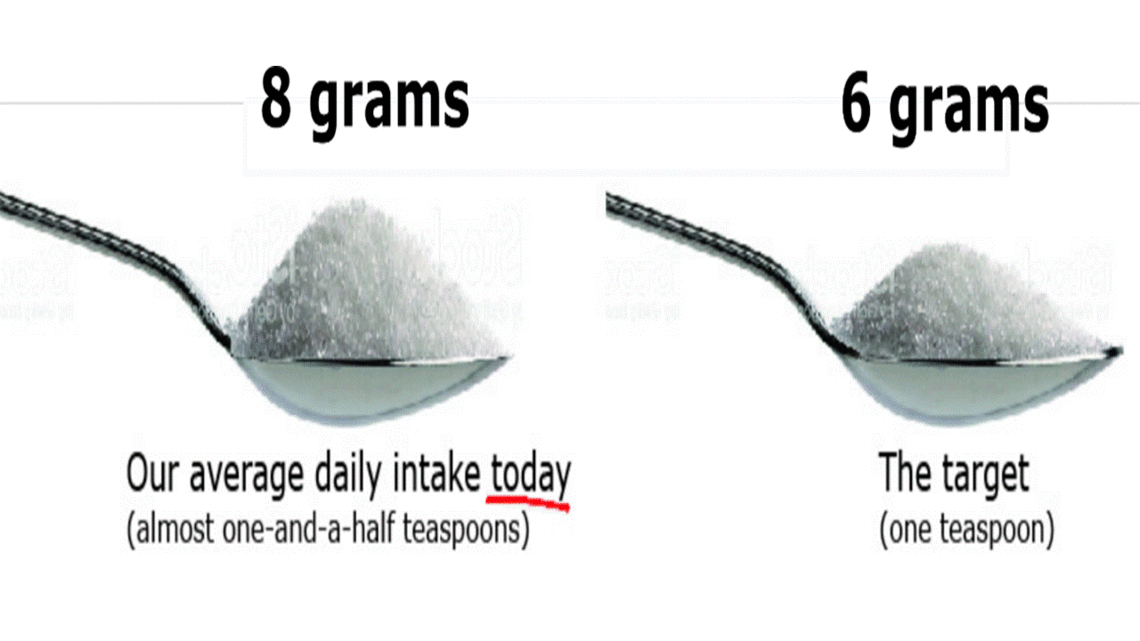We know that too much salt is bad for our health, but what is ‘too much salt’? How can we reduce our salt intake?
- The health risks of high salt (sodium) intake
- How much salt should we be eating?
- Where does our dietary salt come from?
- How can we reduce our salt intake?
- How do we know how much salt is in the food we’re buying?
- Anything else we should know?
- Conclusions and recommendations
The health risks of high salt (sodium) intake
Too much salt increases the risk of cardiovascular disease (CVD), osteoporosis, kidney stones, age-related kidney failure, and possibly even stomach cancer and cognitive decline.
A large study published in 2019, with over 100,000 participants, confirmed that high sodium intake (more than 5 grams/day) combined with low potassium intake (less than 3.5 grams/day) increases the risk of cardiovascular disease.
How much should we be eating?
|
The NHS advises that we should be eating no more than 6 grams of salt a day from all sources. On average, we’re eating 8 grams of salt a day. |
8 grams a day is less than we used to eat, but it’s still too much. Our target should be 6 grams a day i.e. approximately one teaspoon.
At the same time, one large study reported in The Lancet in 2016, suggests that eating too little salt may increase the risk of heart attack and stroke.
Reducing our salt intake to 6 grams/day seems a reasonable target, but reducing it further cannot be recommended until there is more good quality research available.
Where does our dietary salt come from?
|
In the UK, 75% to 80% of our salt consumption comes from processed food. Western diets have led to a decrease in potassium intake with reduced consumption of fruits and vegetables and an increase in sodium consumption through increased consumption of processed foods. |
Much of the blame for our high salt diet can be laid at the food industry’s door. It routinely overuses salt for flavour, as a preservative and to enable water to be added to the food.

How can we reduce our salt intake?
The best action we can take is simple: Cut down on processed food. Foods to avoid or to eat rarely include:
Other ideas to reduce your salt intake include using more herbs and spices for flavouring, not adding salt to food, rinsing tinned beans to remove excess salt, and buying low or reduced sodium food products.
How do we know how much salt is in the food we’re buying?
Labels can be helpful as they use traffic light colours to show low, medium and high levels of salt in a food.
Some manufacturers quote Recommended Daily Amounts (RDA) of sodium. Up to 5% is low sodium, over 20% is high. Remember that 1 gram salt contains 0.4 grams of sodium.

Unprocessed foods are richer in potassium, another element essential to most bodily processes. Potassium is found in high amounts in most fruit and vegetables and in unprocessed meat and in some fish.
Conclusions and recommendations
- We need to reduce the salt we currently consume to about 6 grams/day – about a teaspoon.
- We should eat less processed food, as these foods are usually the main source of salt in our diet.
- Eating more natural, unprocessed food (like fruit, vegetables and unprocessed meat and fish) will result in a better balance of sodium and potassium and therefore reduce the risk of high blood pressure and CVD.
- Consuming less salt will also reduce the risk of developing other conditions such as calcium depletion and possibly stomach cancer.
- Elderly people, and those who have medical conditions such as kidney diseases, should consult their doctor before reducing their sodium intake and increasing their potassium intake.
__________________________
Other relevant articles on the Age Watch website:
- Diet: A diet that works for you
- Diet: Too much salt?
- Diet: Salt, Sugar and Fat
- Tackling obesity: Junk food syndrome?
Reviewed and updated by Kirulagini Sivamathavan, October 2020. Next review date September 2024



